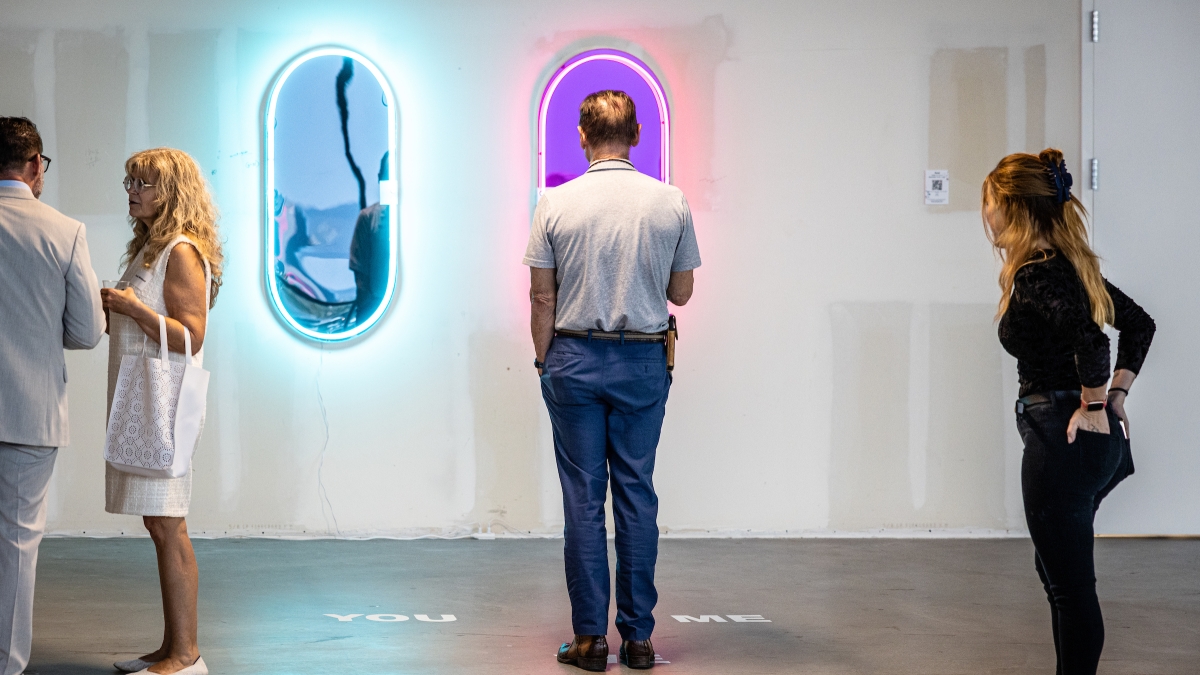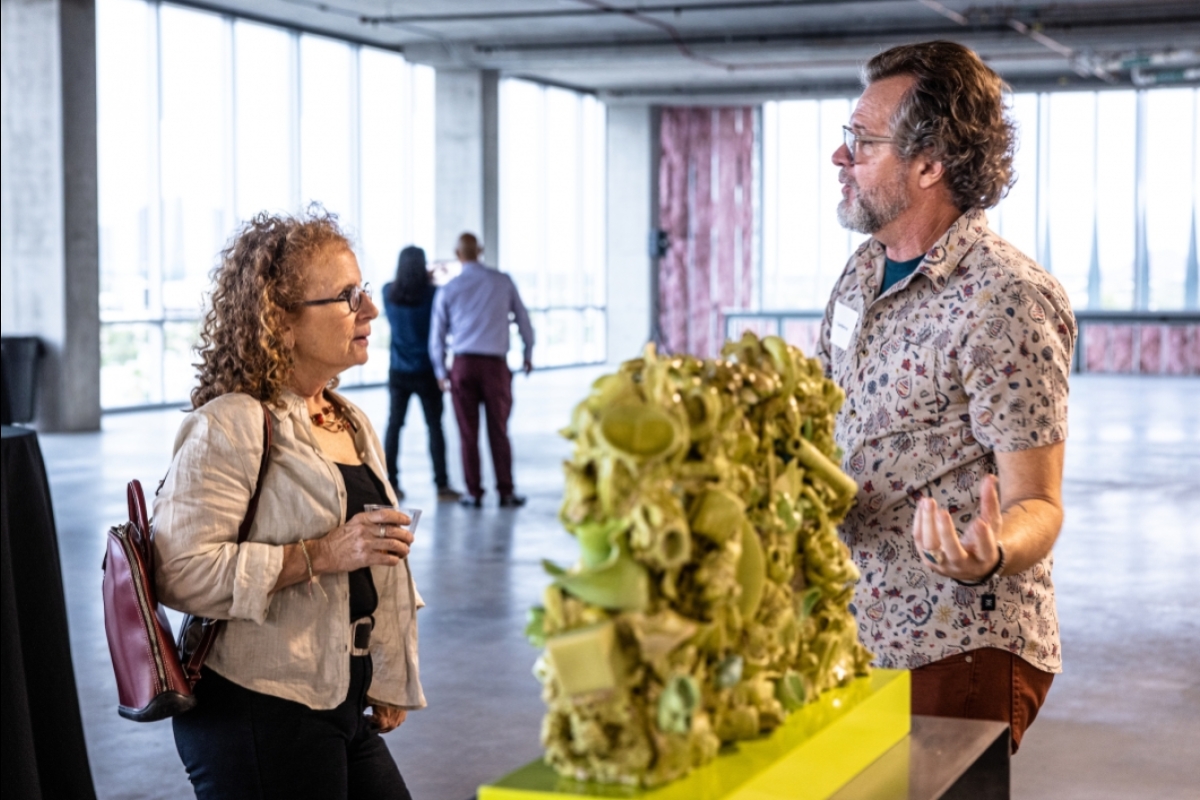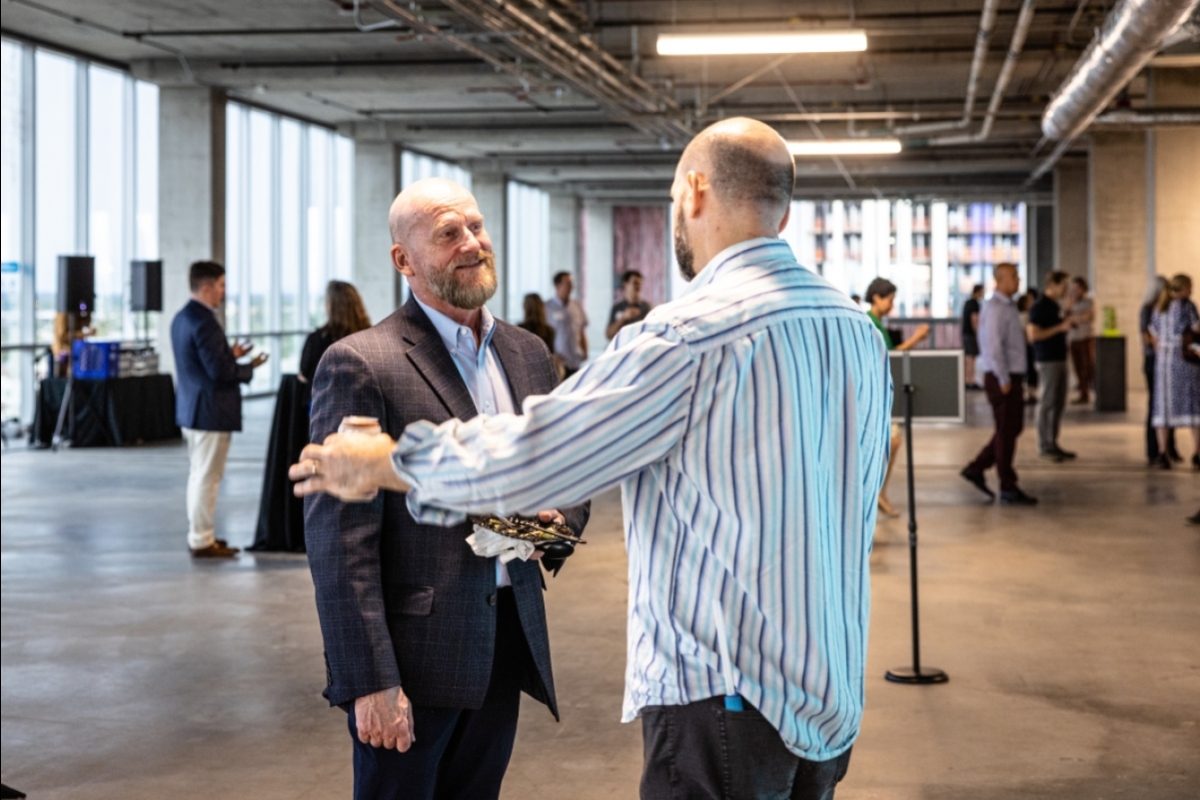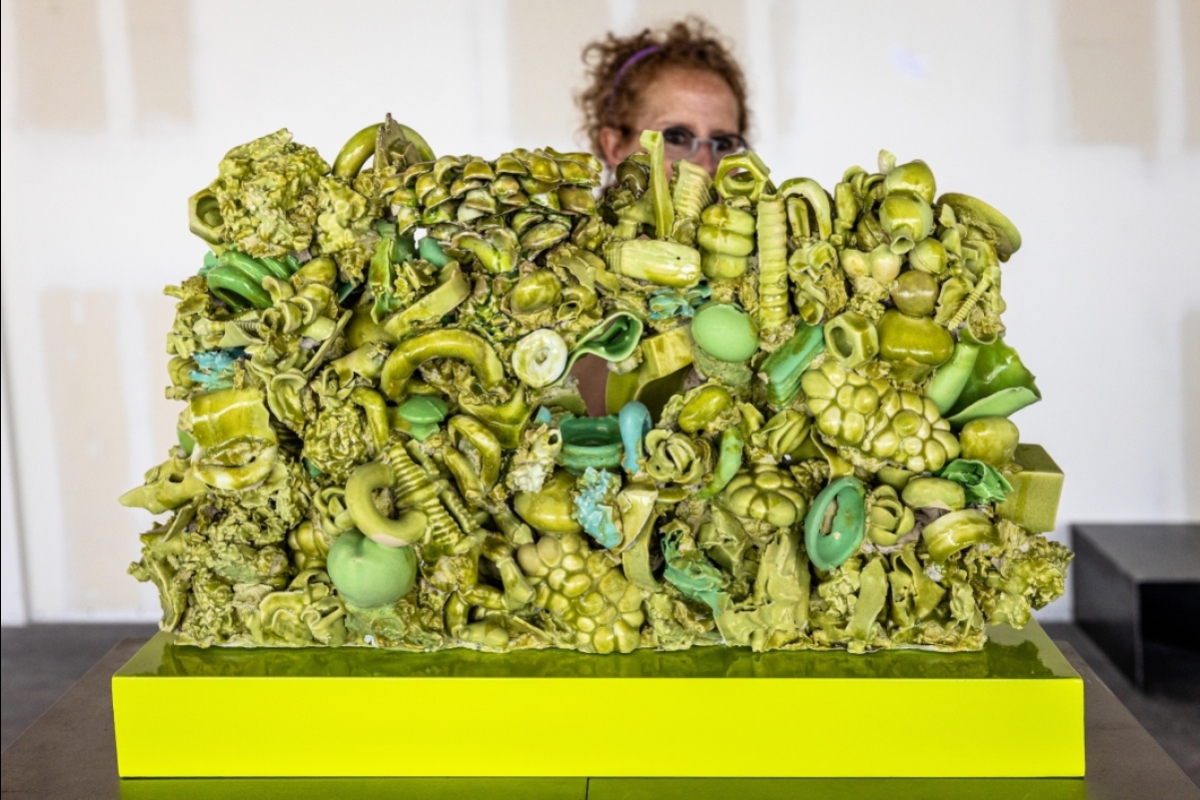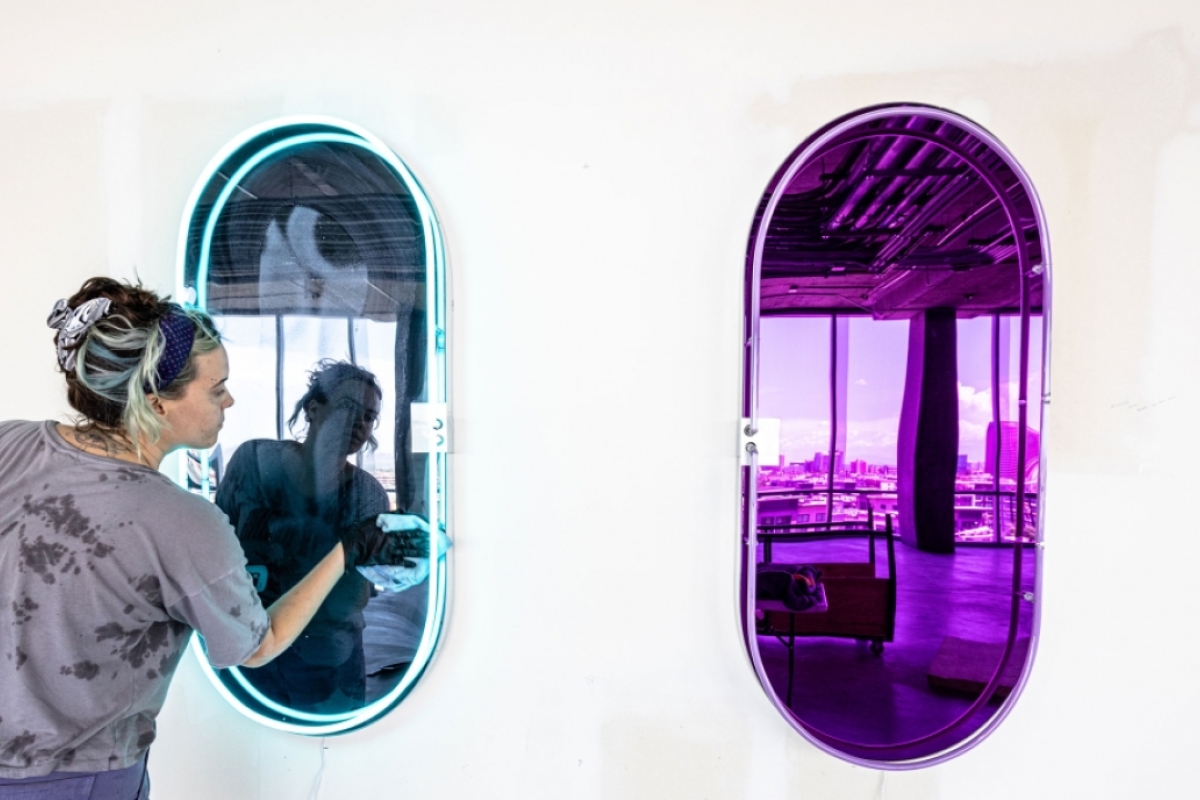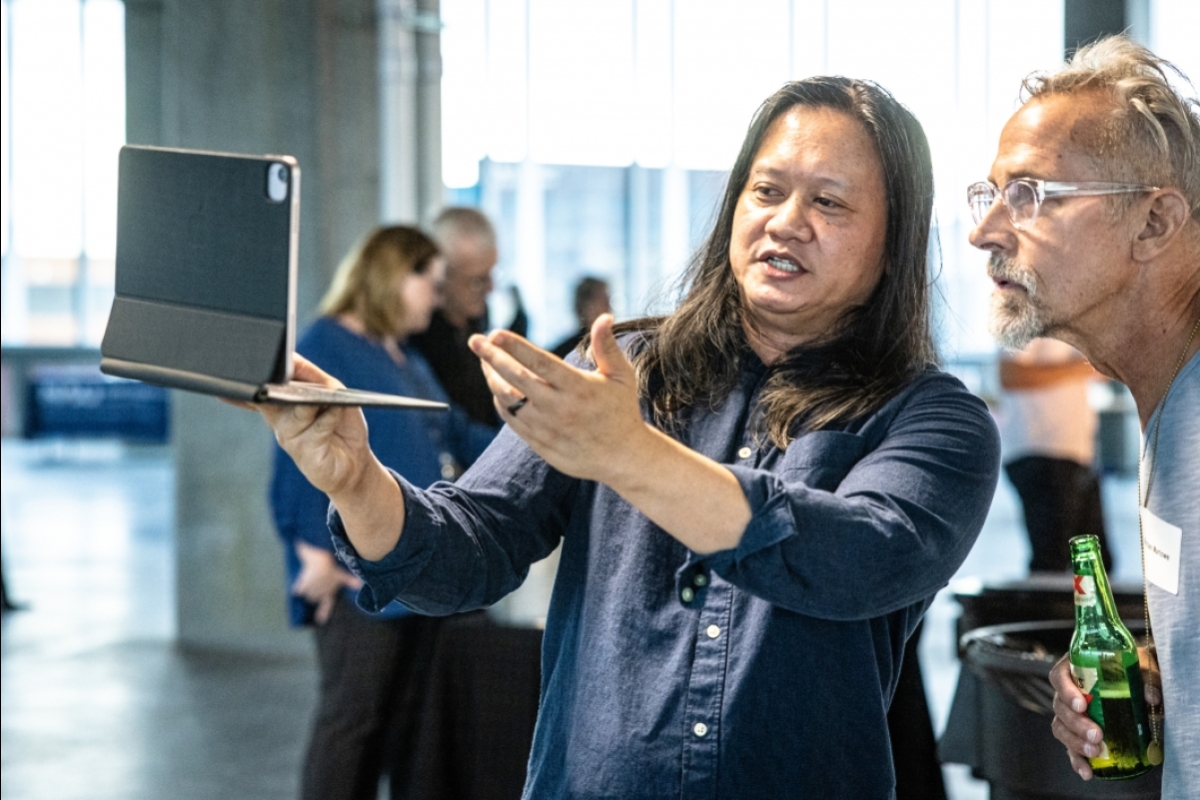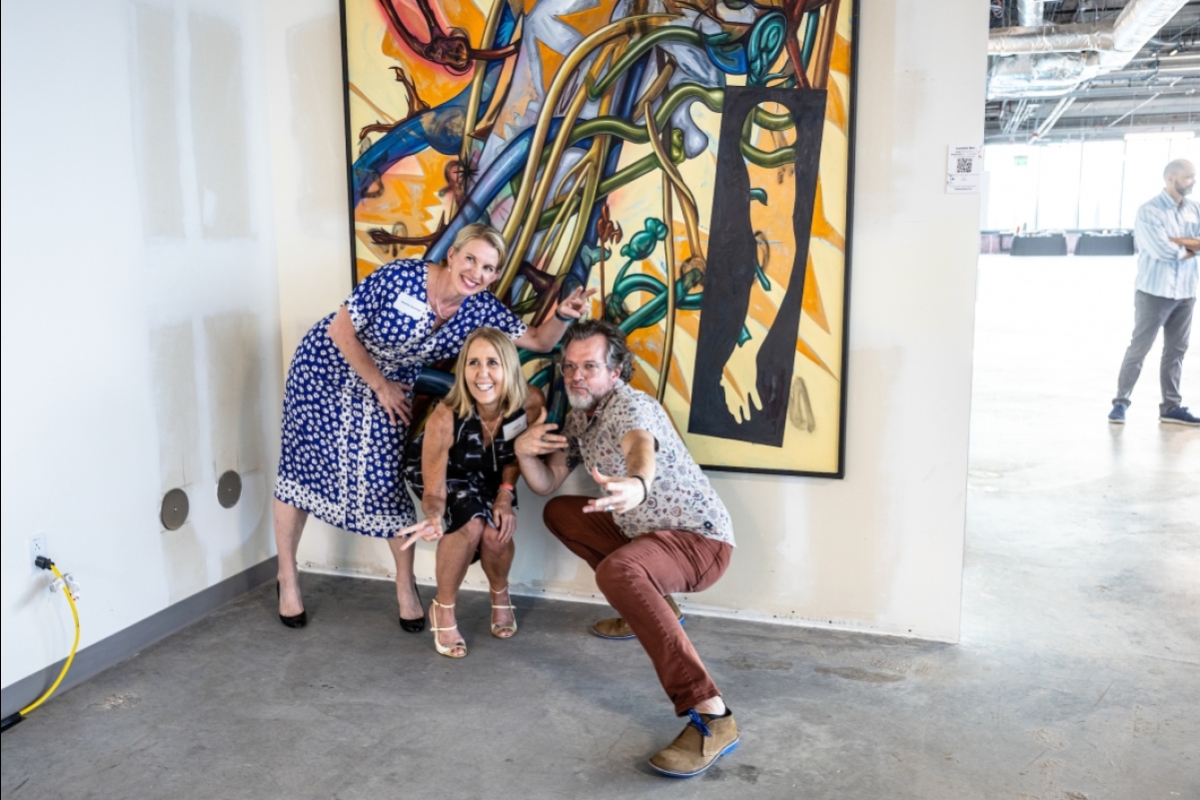Dyadic communication. Synaptogenesis. Repetitive behavior modification.
All very important lines of scientific inquiry that are all being studied in the heart of downtown Phoenix on the 30-acre medical education and research campus known as the Phoenix Bioscience Core (PBC), where innovative minds are engaged in an endeavor to enhance the health of the surrounding community.
But to the average Phoenix resident, such concepts can seem vague at best and completely foreign at worst, when in reality they each refer to research having to do with cancer, traumatic brain injury and dementia — concepts that are not only easy to grasp but that have likely touched many of their lives.
In the Artist + Researcher Exhibition, the first project to come out of the recently formed PBC Arts Committee, nine pairs of local artists and researchers from all three of the state’s public universities collaborated on visual art pieces that communicate some of the groundbreaking research taking place on the PBC every day in a way that makes it accessible to all.
Nearly a year in the making, the exhibit had a private debut last Friday in a gallery space at 850 PBC, the latest addition to the PBC, and is set to relocate to the Health Sciences Education Building at 435 N. Fifth St. on Sept. 2, where it will be available for public viewing.
The exhibit was the brainchild of Cynthia Standley of the University of Arizona College of Medicine–Phoenix, a self-described physiologist-slash-neuroscientist and dabbler in the arts who was inspired by a similar program at University of Southern California’s Keck School of Medicine to try her hand at bridging science and the arts here in the Valley.
“Art is so approachable, and it speaks to everybody,” Standley said. “We may not even realize it when we're looking at the piece of work, but it remains with us and we're thinking about it later. So I think it's a perfect medium to get across some of the really impactful science and innovations that are happening here on this campus and to help the community understand what is really being accomplished here.”
In “Dyad,” neon artist Lily Reeves collaborated with Shelby Langer, an associate professor in Arizona State University's Edson College of Nursing and Health Innovation who researches dyadic, or two-person, communication and emotion regulation within the context of chronic illness, to create a piece featuring two mirrors, each with a different-colored neon light, that use “perspective and optical illusion to speak to the combination of two truths.”
Langer is wrapping up a five-year grant-funded study called “Couple Communication in Cancer: A Multi-method Examination” in which she and colleagues assessed the communication of over 300 patients and their partners while coping with breast, colon, rectal or lung cancer.
“We're hoping to get a much more nuanced understanding of the way in which couples communicate … and identify who might need extra support for better communication,” Langer said. “The idea is to better design interventions to support these couples as they're adapting to the cancer experience.”
She and Reeves met in November 2021 during a speed-dating-style networking event hosted by exhibit organizers at Bentley Gallery, a partner on the project, designed to match participating artists and researchers based on their interests and expertise.
“I’m really interested in these, like, invisible, psychological, emotional worlds and how to improve the quality of life through art,” Reeves said. “When (Langer and I) met, her work was super interesting to me because she's studying this really nuanced thing that has these reverberative effects (on quality of life).”
In “Lost Memory in Matter + Behavioral Complexity,” ceramics sculpture artist and ASU School of Art Professor Susan Beiner collaborated with David Coon, professor and associate dean of research initiatives, support and engagement at Edson College who researches interventions that focus on culturally diverse groups of midlife and older adults facing chronic illnesses, to create two abstract pieces.
“Behavioral Complexity” features an organ-like object suspended above a square of wavy green protrusions, evoking a field.
According to Beiner, the negative space between the organ and the field, or the ground, below represents the growing space between a dementia patient’s grounded reality and the mind as it leaves it, which Coon encourages them to recast as a space where they can build new skills and mold behaviors to help manage their situation.
“David talked about molding people in relation to skill-building, and I use molds in my work,” Beiner said. “So everything here was a mold, and I sort of think of a connection between process and object, and that connected to dementia awareness.”
“Lost Memory in Matter” features a conglomeration of several small objects representing all the thoughts, memories and ideas stored in one’s brain, all cast in a variety of green hues, the last color dementia patients lose the ability to see.
“For me and my team, it was really rewarding to see the work that we do conceptualized in a different way, because it's another way for the community to see the importance of what these interventions with these individuals and their families are trying to preserve,” Coon said.
Still, other pieces use brightly colored yarn to depict the stained dye that allows for the visualization of heart muscle imagery, or augmented reality to allow exhibit viewers to step inside an injured brain and take a look around.
Following the exhibit’s time at the Health Sciences Education Building, it will travel to various locations throughout Phoenix, Flagstaff and Tucson.
Looking forward, PBC communications manager Joe Martin said the city of Phoenix has committed to a generous contribution from its arts and culture program to the PBC Arts Committee, earmarked to fund future projects such as permanent art installations on the fifth and sixth floors of 850 PBC, which the committee envisions serving as the host of many community events to come.
Including the surrounding community in the developments at PBC that will ultimately affect them is a guiding principle echoed by all involved.
“This is the only place in Arizona that all three of the state universities are together in one place, physically,” said David Krietor, executive director of the PBC. “The real trick here is to take … all the great science occurring here, and all the great teaching occurring here that has never really evolved as a place yet. So we're transitioning from this collection of great things to a place. And one of the ways that you do place-making is through the arts … and one way to build a community is through the arts.”
Top photo: Attendees at the Aug. 12 opening of the Artist + Researcher Exhibition take a look at “Dyad.” Neon artist Lily Reeves collaborated with Shelby Langer, an associate professor in the Edson College of Nursing and Health Innovation at ASU who researches dyadic, or two-person, communication and emotion regulation within the context of chronic illness, to create a piece featuring two mirrors lit with different-colored neon and using optical illusion. Photo by Charlie Leight/ASU News
More Health and medicine

Moeur awardee seeks to turn passion into tangible human impact
Editor’s note: This story is part of a series of profiles of notable fall 2024 graduates.During high school, Nguyen Thien Ha Do, a graduating student in the medical studies program at the…

Health Solutions graduate trains to become a better health educator
Editor’s note: This story is part of a series of profiles of notable fall 2024 graduates.At almost 15 years old, Robyn Colao, who is now graduating from the health sciences program at the …
ASU team part of nationwide study looking at Type 2 diabetes in youth
Near the end of an interview in which he talked about the work his team will be doing to tackle the rise in Type 2 diabetes among youth, Arizona State University Professor Gabe Shaibi answered why…
